Actually, you can't do this. The reason is that they do not "live" in the same time. Javascript code is available only after C# / Razor is rendered. Refer to this thread.
So, I think you should use ajax here to send a request to access GetClientCaseType() method.
Update:
For how to send a ajax post request, you need to do the below steps:
1.Add the below service in stratup.cs
services.AddAntiforgery(o => o.HeaderName = "XSRF-TOKEN");
2.Add the AntiForgeryToken to the current page
@Html.AntiForgeryToken();
3.Set the token to request header in ajax
beforeSend: function (xhr) {
xhr.setRequestHeader("XSRF-TOKEN",
$('input:hidden[name="__RequestVerificationToken"]').val());
},
This is an example:
Create.cshtml:
@page
@model RazorApp.Pages.ClientCases.CreateModel
@Html.AntiForgeryToken();
<button id="btn" onclick="casetype()">Click</button>
@section scripts{
<script>
function casetype() {
var id = 1;
$.ajax({
url: 'Create?handler=GetUploadedFile',
type: "POST",
data: { id : id },
beforeSend: function (xhr) {
xhr.setRequestHeader("XSRF-TOKEN",
$('input:hidden[name="__RequestVerificationToken"]').val());
},
success: function (data) {
if (data != null) {
var vdata = data;
}
}
});
}
</script>
}
Create.cshtml.cs:
public class CreateModel : PageModel
{
public void OnGet()
{
}
public IActionResult OnPostGetUploadedFile(int id)
{
var result = "AAA";
return new JsonResult(result);
}
}
Note: the pagehandler should be in this format OnPostXxx() or OnGetXxx().
And the url in ajax should like XXX?handler=Xxx.
Result:

